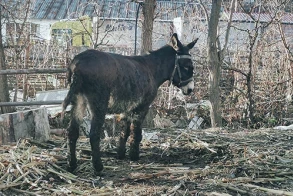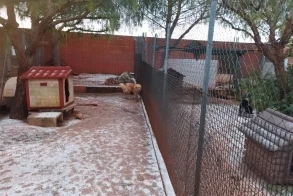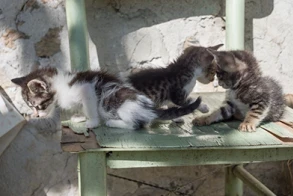KEMAL AT THE DENTIST’S
The 23 years old Kemal joined us in the Valley in the autumn of 2021
Before he did, he used to live with his owners in the village of Koprivlen. He was one of the donkeys that we provided with medical care in his home as part of our regional program in aid of local donkey owners.
Many of our ‘wards’ have specific health problems that require an individual approach. For Kemal, those have always been his teeth.
Teeth-related health problems are common for donkeys, perhaps the most common. Kemal’s molars don’t connect as they should, they become overgrown and develop high, sharp ridges. Those make open wounds in the insides of his mouth but also prevent his jaws from having contact and as a result, he is unable to graze or chew. The outcome is a worrying loss of weight.
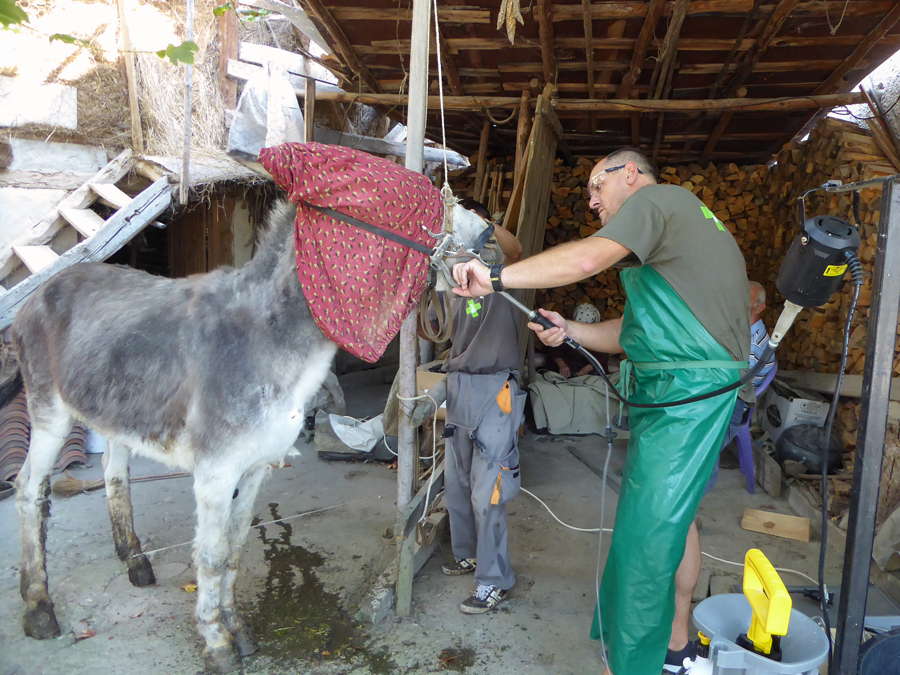
We have to go to Koprivlen quite often in order to look after Kemal’s teeth. At the end of 2021 after a three-year-long participation in our local program, Kemal’s owners make the decision to leave him in the Valley under our care – it has become too hard for them to look after him.

After his first winter with us, we see the familiar symptoms again – loss of weight and overproduction of saliva. It’s time for a visit ‘to the dentist’s’.
We have the necessary equipment that facilitates our work and saves donkeys the discomfort of losing their balance. We ‘fix’ Kamal in one such piece of equipment, give him the anaesthetic and begin preparation for the treatment.
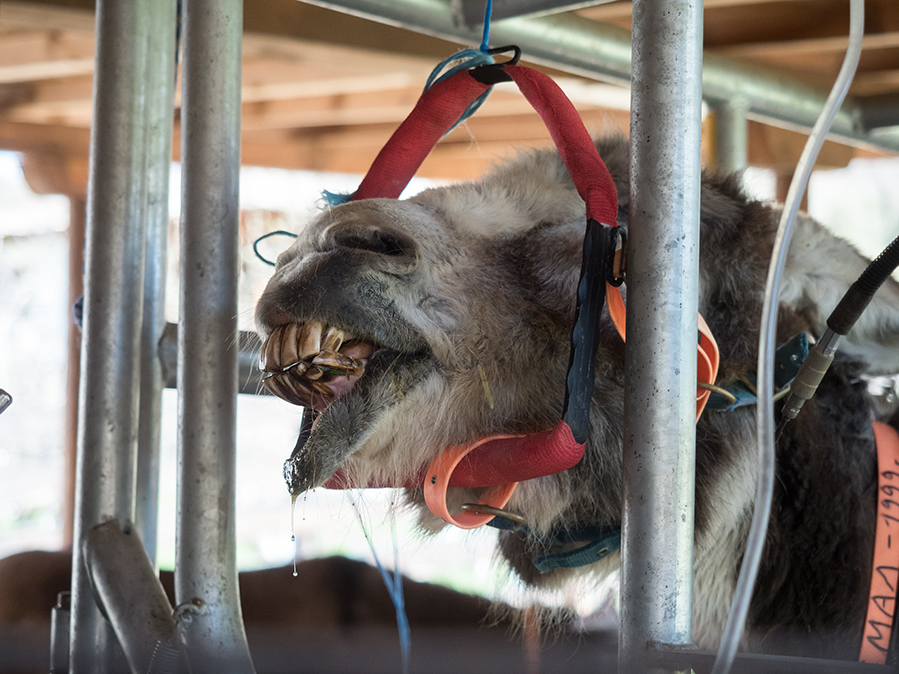
It is obvious Kemal’s molars have become overgrown again, since his front teeth cannot make contact – so it is impossible for him to graze with them.
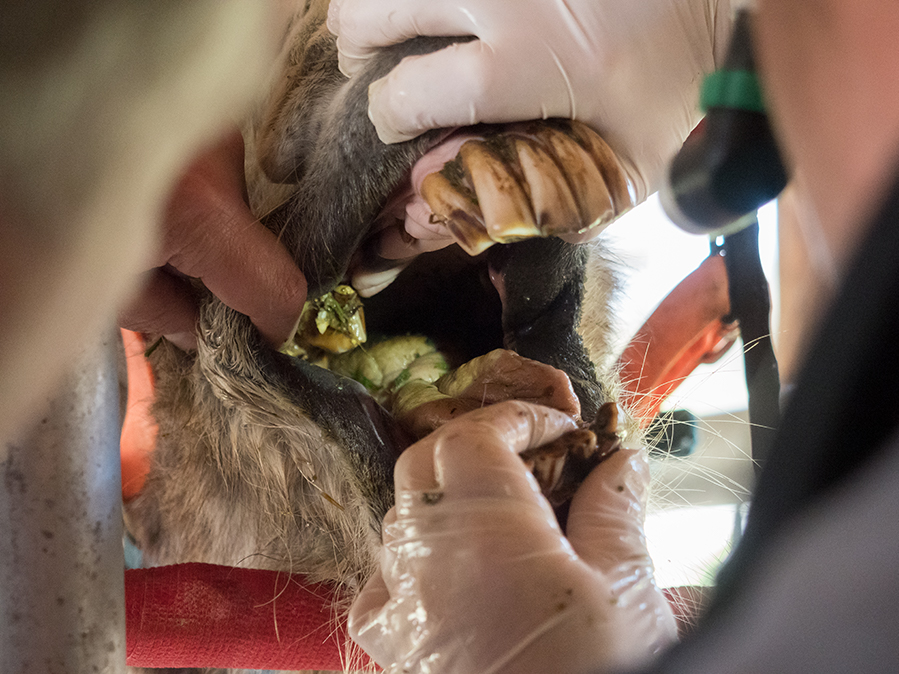
The food he hasn’t been able to chew and mash with his teeth gets collected in pockets in his mouth and starts rotting. We wash his mouth thoroughly and carefully with water.
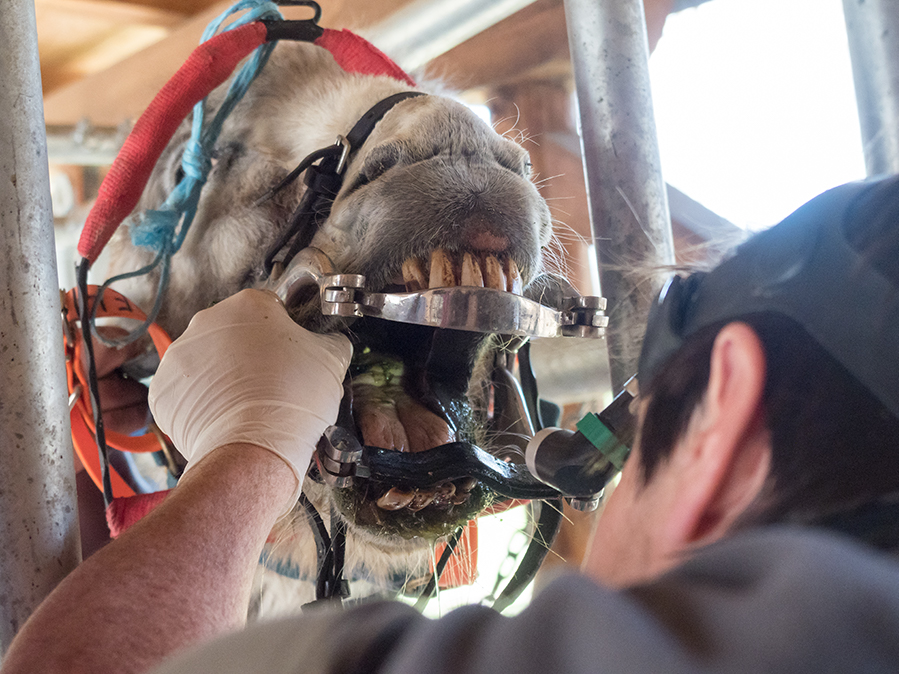
No donkey likes going to the dentist’s with all those uncomfortable contraptions.
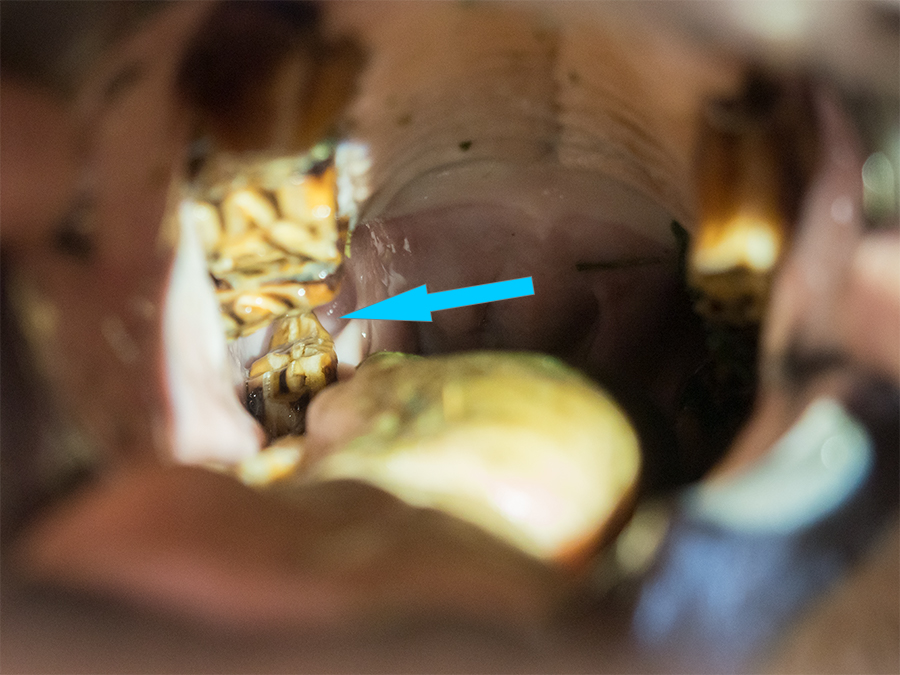
That’s the wayward molar that is ‘the root’ of Kemal’s problems. We will have to work hard to file it down.

All molars are being filed and given grooves so Kemal can chew properly.
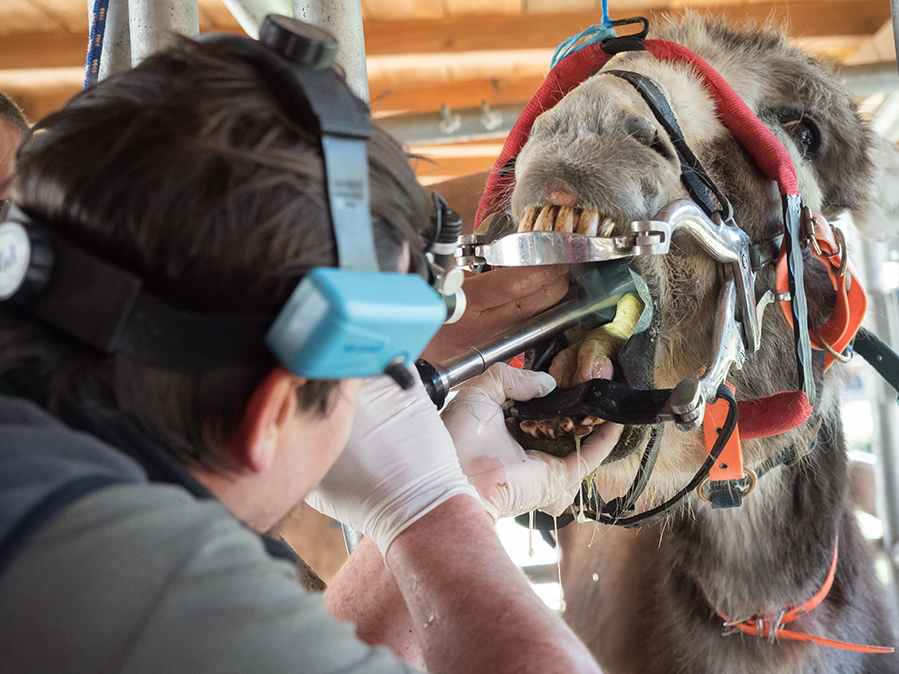
It is hardly a pleasant experience but it is for his own good.
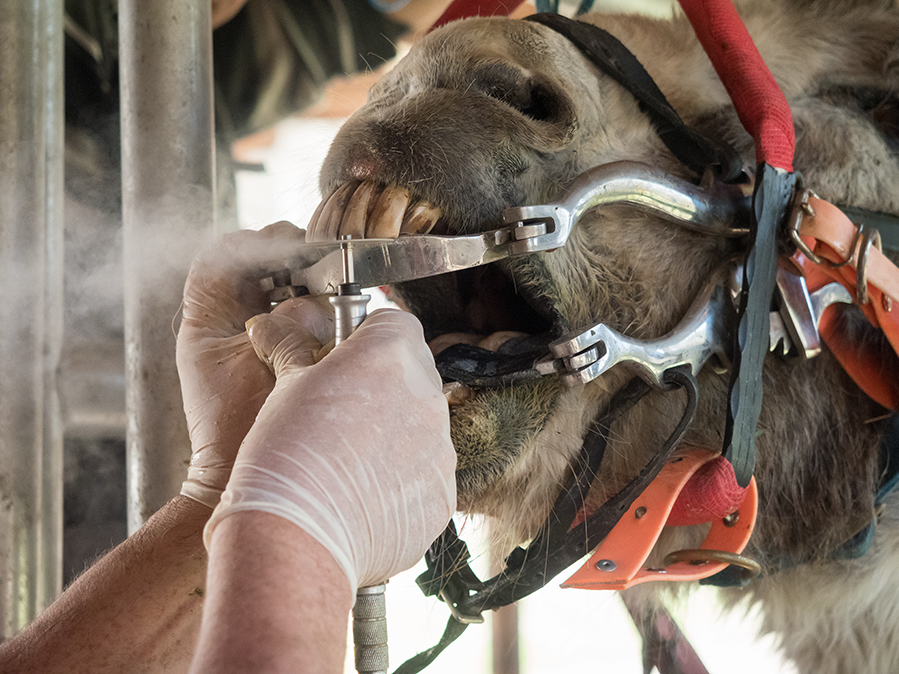 The last step of the treatment is filing down the incisors to have them at the appropriate length and line. Now Kemal can use them to graze again.
The last step of the treatment is filing down the incisors to have them at the appropriate length and line. Now Kemal can use them to graze again.

On the following day. Kemal’s head is buried in the hay rack. He is feeding properly and with great appetite.

